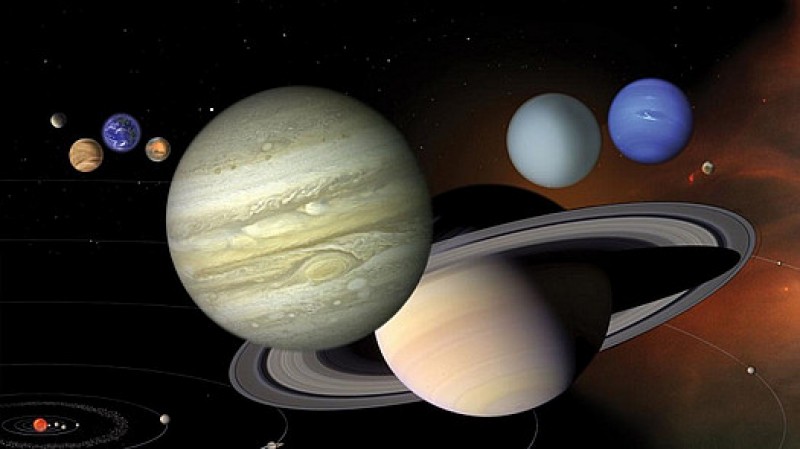
When will skywatchers be able to see the planets at their best in 2018? Look no further than this handy guide from Space.com. Below, you will find information about when a particular planet will be passing near another planet or a bright star, as well as the constellation that each will occupy during the course of the year. It also provides dates for various circumstances — conjunctions, oppositions and elongations — that will occur in 2018.
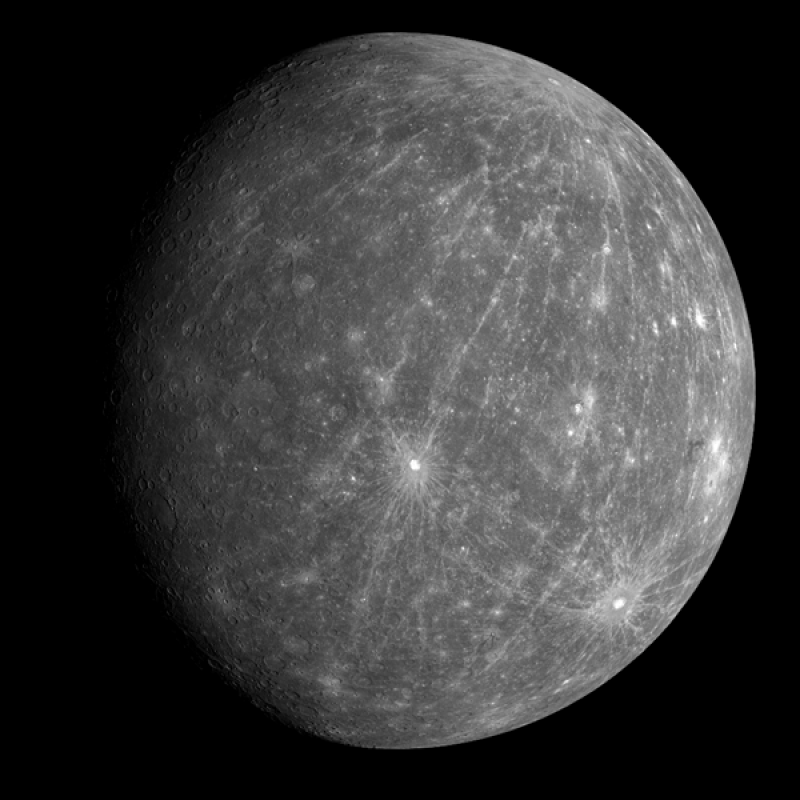
Mercury
Mercury
y appears as a bright "star" with a yellowish or ochre hue. As an evening star, it appears in the western sky, setting about an hour after the sun. As a morning star, it appears in the eastern sky, rising about an hour before the sun. There must be a clear, unobstructed horizon on these occasions. It will appear in the mornings from Jan. 1 to Jan. 15; evenings from March 6 to March 22; mornings from April 22 to May 13; evenings from June 28 to July 19; mornings from Aug. 19 to Sept. 4; evenings from Oct. 23 to Nov. 13; and mornings from Dec. 8 to Dec. 29.
Mercury will be brightest and easiest to spot in the evening sky between March 6 and March 22, and brightest and easiest to spot in the morning sky between Dec. 8 and Dec. 29 (though the apparition of Aug. 19 to Sept. 4 will run a close second). Mercury will pass 0.7 degrees south of Saturn on Jan. 13. On the morning of Dec. 21, Mercury will pass 0.8 degrees north of brighter Jupiter.
ually appears as a bright "star" with a yellowish or ochre hue. As an evening star, it appears in the western sky, setting about an hour after the sun. As a morning star, it appears in the eastern sky, rising about an hour before the sun. There must be a clear, unobstructed horizon on these occasions. It will appear in the mornings from Jan. 1 to Jan. 15; evenings from March 6 to March 22; mornings from April 22 to May 13; evenings from June 28 to July 19; mornings from Aug. 19 to Sept. 4; evenings from Oct. 23 to Nov. 13; and mornings from Dec. 8 to Dec. 29. Mercury will be brightest and easiest to spot in the evening sky between March 6 and March 22, and brightest and easiest to spot in the morning sky between Dec. 8 and Dec. 29 (though the apparition of Aug. 19 to Sept. 4 will run a close second). Mercury will pass 0.7 degrees south of Saturn on Jan. 13. On the morning of Dec. 21, Mercury will pass 0.8 degrees north of brighter Jupiter.
Mercury will be brightest and easiest to spot in the evening sky between March 6 and March 22, and brightest and easiest to spot in the morning sky between Dec. 8 and Dec. 29 (though the apparition of Aug. 19 to Sept. 4 will run a close second). Mercury will pass 0.7 degrees south of Saturn on Jan. 13. On the morning of Dec. 21, Mercury will pass 0.8 degrees north of brighter Jupiter.
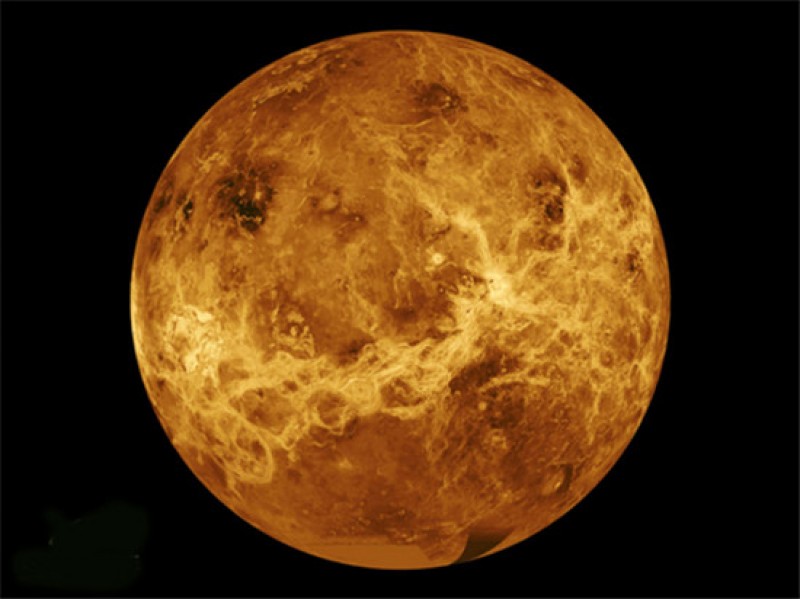
Venus
Always brilliant and shining with a steady, silvery light, Venus will be visible in the western sky at dusk from March 12 to Oct. 17; in the eastern sky at dawn from Nov. 5 to Dec. 31. Venus will attain its greatest brilliancy in the evening sky on Sept. 20 and again in the morning sky on Dec. 1.
From late September through mid-October, and then again through most of November, in the evening sky Venus will resemble a striking crescent phase in telescopes and steadily held binoculars. Venus will pass exceedingly close — 0.07 degrees — south of Uranus on March 28, giving an excellent opportunity to sight that much dimmer, greenish world in binoculars by using Venus as a benchmark. Uranus will appear only 1/10,000 times as bright as Venus. On July 9, Venus will pass 1 degree north of the brightest star in the constellation Leo, bluish-white Regulus.
From late September through mid-October, and then again through most of November, in the evening sky Venus will resemble a striking crescent phase in telescopes and steadily held binoculars. Venus will pass exceedingly close — 0.07 degrees — south of Uranus on March 28, giving an excellent opportunity to sight that much dimmer, greenish world in binoculars by using Venus as a benchmark. Uranus will appear only 1/10,000 times as bright as Venus. On July 9, Venus will pass 1 degree north of the brightest star in the constellation Leo, bluish-white Regulus.
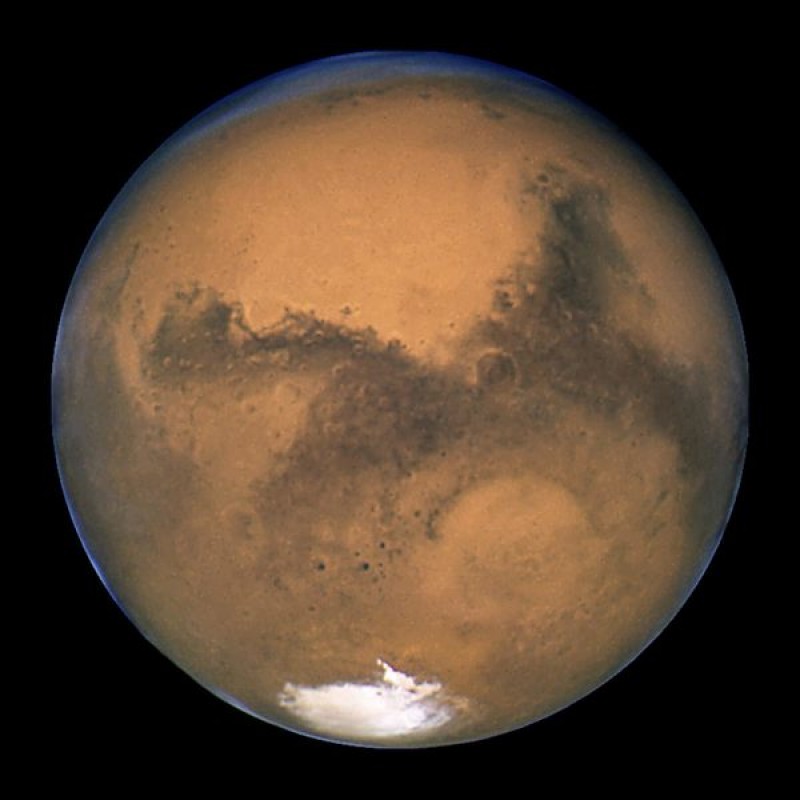
Mars
This is a spectacular year for Mars. On July 31 at 3:50 a.m. EDT, the planet will come closer to Earth than at any other time since its historically close approach of August 2003. Its distance from Earth at that moment will be 35.78 million miles (57.59 million kilometers). Not until September 2035 will it come so close again.
Shining like a "star" with a yellow-orange hue, Mars can vary considerably in brightness. It will appear in the mornings from Jan. 1 through July 26, and evenings from July 27 through Dec. 31. It will appear brightest between July 21 to Aug. 3.
Mars will start the year in the morning sky, rising just before 3 a.m. in the constellation Libra, just west of the planet Jupiter, and shining only 1/20 as bright as Jupiter. At that time, Mars will be 181.4 million miles (292 million km) away, but it will be approaching Earth at an average of 687,000 miles (1.10 million km) a day and consequently will be getting slowly brighter.
Shining like a "star" with a yellow-orange hue, Mars can vary considerably in brightness. It will appear in the mornings from Jan. 1 through July 26, and evenings from July 27 through Dec. 31. It will appear brightest between July 21 to Aug. 3.
Mars will start the year in the morning sky, rising just before 3 a.m. in the constellation Libra, just west of the planet Jupiter, and shining only 1/20 as bright as Jupiter. At that time, Mars will be 181.4 million miles (292 million km) away, but it will be approaching Earth at an average of 687,000 miles (1.10 million km) a day and consequently will be getting slowly brighter.
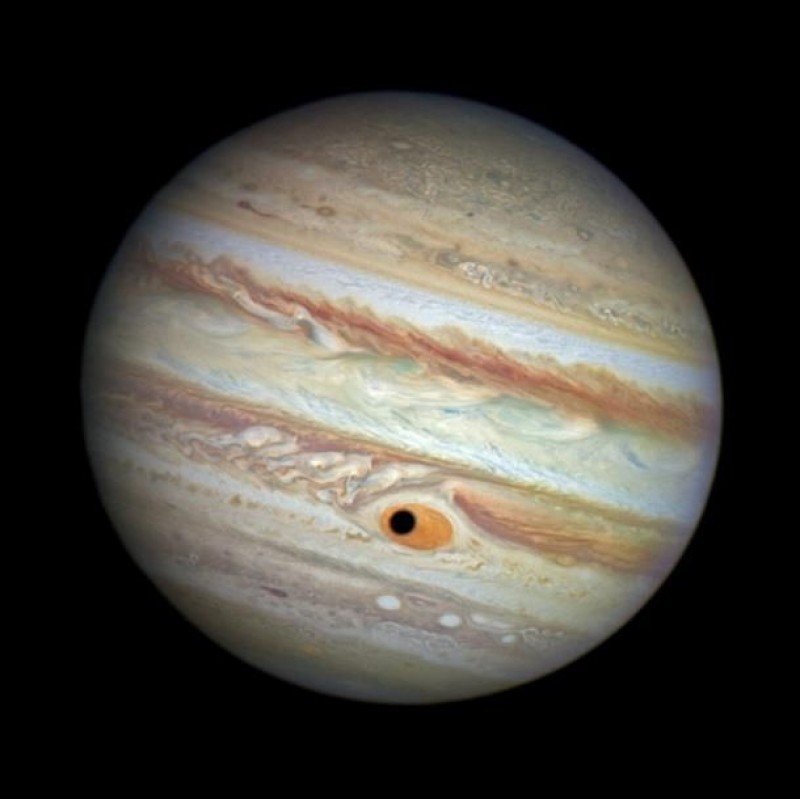
Jupiter
In the night sky, Jupiter looks quite brilliant with a silver-white luster. It will be visible in the mornings from Jan. 1 to May 7, evenings from May 8 to Nov. 7, and mornings again from Dec. 15 to Dec. 31. For much of 2018, Jupiter will shine like a dazzling, non-twinkling, silvery "star" against the constellation of Libra, the Scales, eventually crossing into Scorpius, the Scorpion, on Nov. 21. Jupiter will appear brightest between April 16 to June 4. Jupiter is at opposition to the sun on May 8. On the mornings of Jan. 6 and 7, watch as Jupiter appears less than a half degree to the north of Mars. On the morning of Dec. 21, Jupiter will appear 0.8-degrees south of a dimmer Mercury.
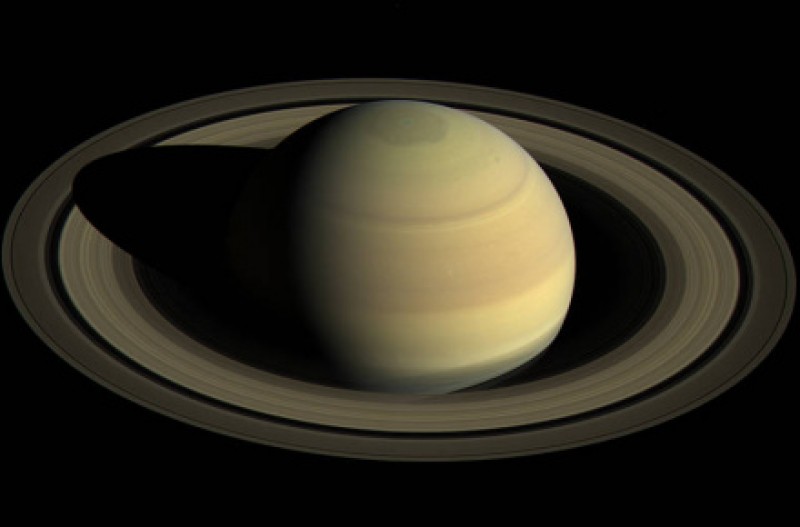
Saturn
Saturn shines like a yellowish-white "star" of moderate brightness. The famous rings are visible only in a telescope. They were turned edge-on (or very nearly so) toward Earth through most of 2009 and at times were quite difficult to observe. The rings have since "opened-up" to our view and were at their maximum tilt toward Earth late last year. Saturn will spend all of 2018 in Sagittarius, the Archer, hovering above the asterism (a prominent pattern of stars) popularly known as "The Teapot." It will be visible mornings from Jan. 7 to June 26, and evenings from June 27 to Dec. 16. Saturn will appear brightest from June 10 to July 16. Saturn is at opposition to the sun on June 27. Saturn will pass 0.7-degrees north of Mercury on Jan. 13. The full moon will be passing about a degree to the north of Saturn during the overnight hours of June 27-28.
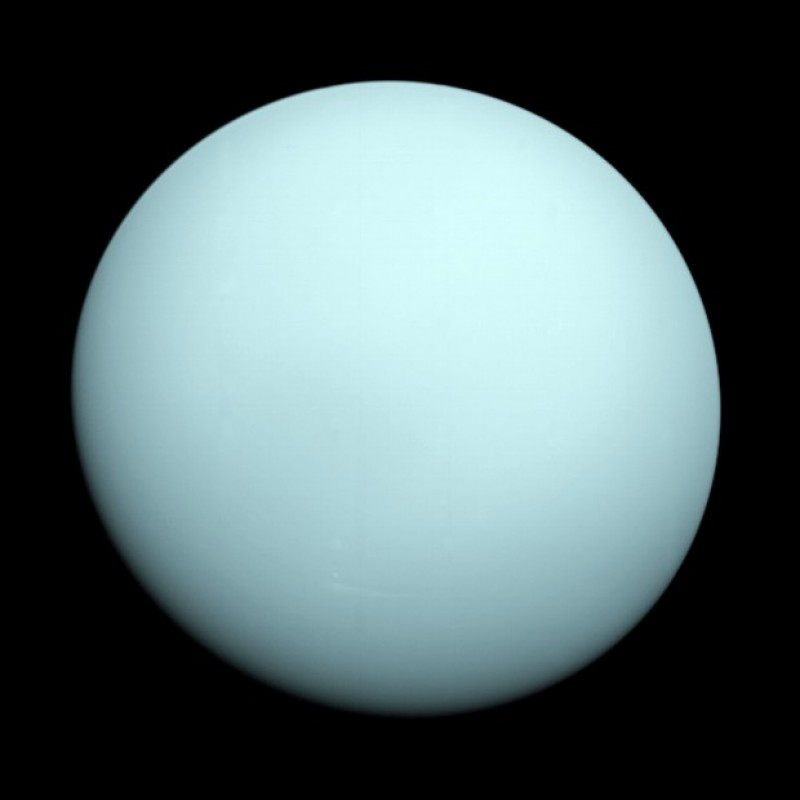
Uranus
Uranus can be glimpsed as a naked-eye object by people who are blessed with good eyesight and a clear, dark sky, as well as a forehand knowledge of exactly where to look for it. It shines at magnitude +5.7 and can be readily identified with good binoculars. A small telescope may reveal its tiny, greenish disk.
Uranus will start 2018 in Pisces, the Fishes, but will then cross over into Aries, the Ram, on April 28. It will remain in Aries until retrograde motion causes it to cross back into Pisces (moving westward) on Dec. 4; it will remain there through the rest of the year. Look for it in the evenings from Jan. 1 to April 2; mornings from May 4 to Oct. 22; and evenings again from Oct. 23 to Dec. 31. Uranus will be brightest from Aug. 31 to Dec. 11. It will arrive at opposition to the sun on Oct. 23. Uranus will pass exceedingly close — 0.07 degrees — north of Venus on March 28, giving an excellent opportunity to sight this much dimmer, greenish world in binoculars by using Venus as a benchmark. Venus will appear 10,000 times brighter than Uranus.
Uranus will start 2018 in Pisces, the Fishes, but will then cross over into Aries, the Ram, on April 28. It will remain in Aries until retrograde motion causes it to cross back into Pisces (moving westward) on Dec. 4; it will remain there through the rest of the year. Look for it in the evenings from Jan. 1 to April 2; mornings from May 4 to Oct. 22; and evenings again from Oct. 23 to Dec. 31. Uranus will be brightest from Aug. 31 to Dec. 11. It will arrive at opposition to the sun on Oct. 23. Uranus will pass exceedingly close — 0.07 degrees — north of Venus on March 28, giving an excellent opportunity to sight this much dimmer, greenish world in binoculars by using Venus as a benchmark. Venus will appear 10,000 times brighter than Uranus.
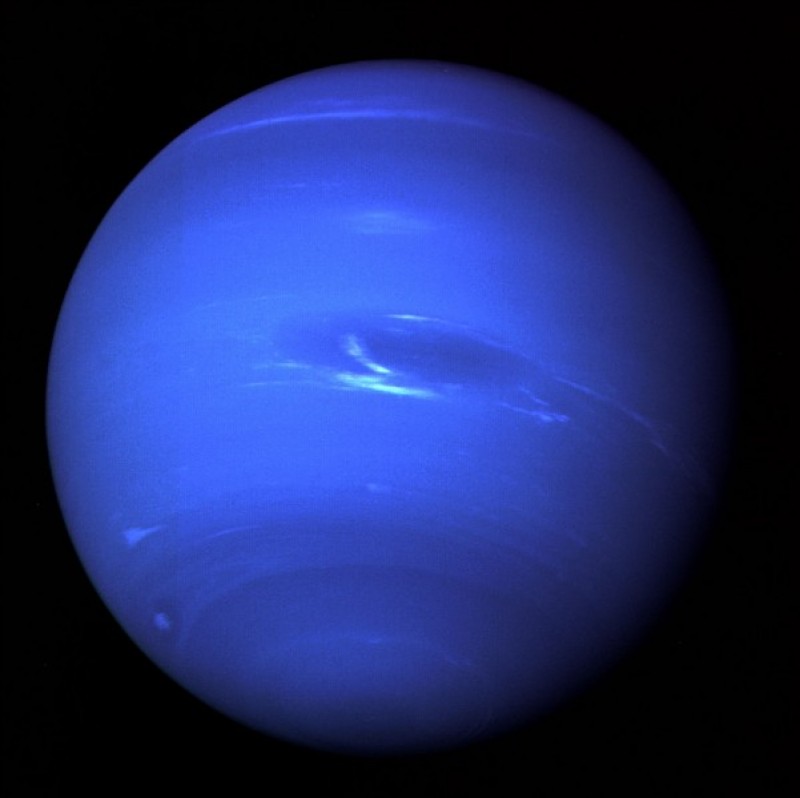
Neptune
Neptune will spend 2018 in the constellation of Aquarius. At a peak magnitude of +7.8, this bluish-hued world is only visible with good binoculars or a telescope. Look for it in the evenings from Jan. 1 to Feb. 17; mornings from March 20 to Sept. 6; and evenings again from Sept. 7 to Dec. 31. Neptune will appear brightest from July 15 to Oct. 30. Opposition is on Sept. 7. On the evening of Dec. 7, Mars will be only about a quarter of a degree east of Neptune, providing a good benchmark for sighting this dim, blue world in binoculars. Mars will appear more than 1,500 times brighter than Neptune.Joe Rao serves as an instructor and guest lecturer at New York's Hayden Planetarium. He writes about astronomy for Natural History magazine, the Farmer's Almanac and other publications, and he is also an on-camera meteorologist for Verizon Fios1 News in Rye Brook, NY.
Source: Joe Rao